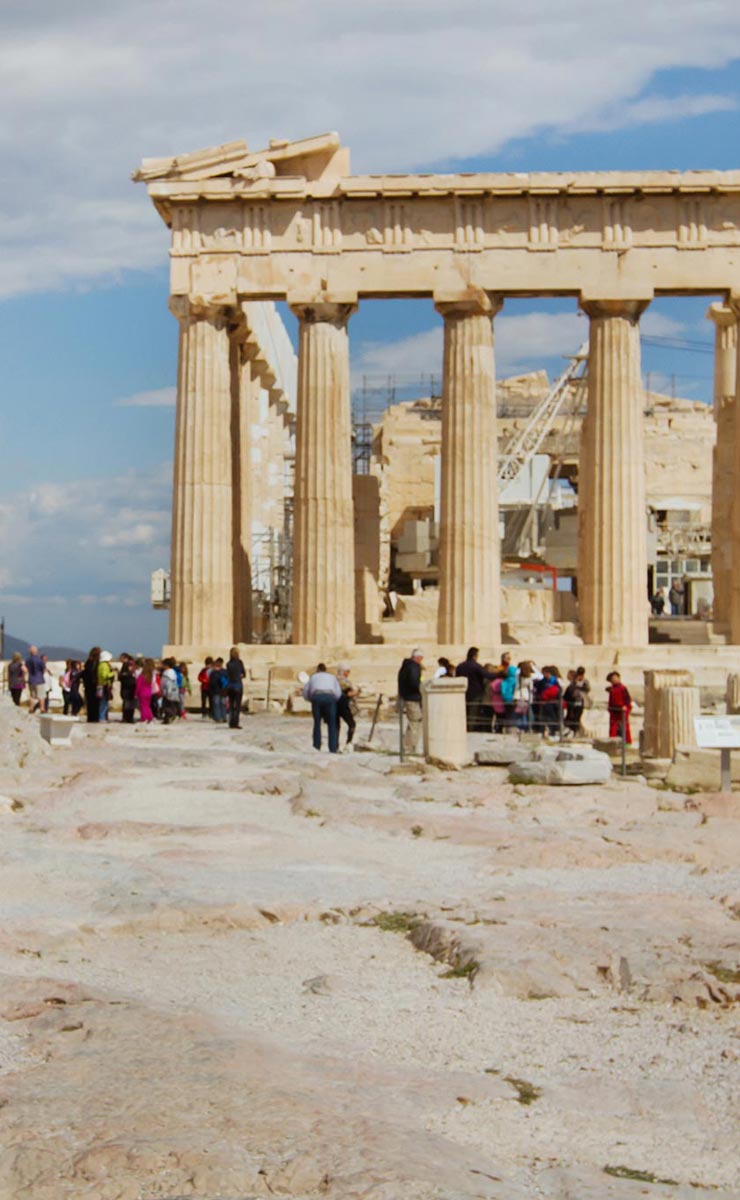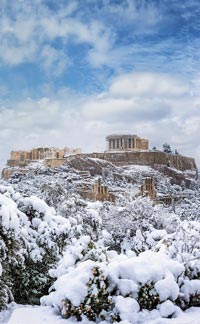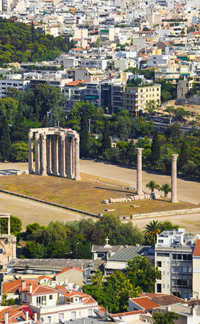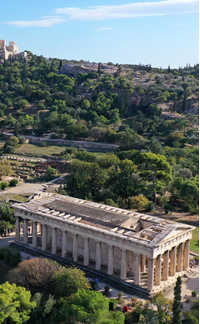Perched high above the city on the rocky crown of the Acropolis, the Parthenon stands as a breathtaking symbol of classical antiquity and the enduring spirit of Athens. Constructed nearly 2,500 years ago during the Golden Age of Pericles, this magnificent temple was dedicated to the city's patron goddess, Athena Parthenos, protector of wisdom, warfare, and civilization.
A Temple Through the Ages
More than just an architectural wonder, the Parthenon has lived many lives. Originally erected as a religious sanctuary, it has also served as a treasury, a Byzantine church, a Catholic cathedral, and later, under Ottoman rule, as a mosque. Despite damage over centuries — including a catastrophic explosion in the 17th century — the Parthenon remains an enduring icon of the ancient world.
Architectural Grandeur
Built entirely of Pentelic marble, the Parthenon is a classic example of the Doric order, the oldest and most robust of the ancient Greek architectural styles. The temple rests on a stepped platform and features 8 massive columns at the front and back and 17 along each side, creating a harmonious and balanced structure.
Though it may appear perfectly symmetrical to the eye, its design includes subtle optical refinements — slightly curved lines and tapered columns — that correct visual distortion and demonstrate the extraordinary skill of its architects, Iktinos and Kallikrates, and sculptor Phidias.
The Art of the Gods
The Parthenon was as much a showcase for sculpture as it was a temple. Its decorative elements told powerful stories from Greek mythology:
- Pediments: The triangular spaces above the entrances were filled with dramatic scenes — the birth of Athena on the east and her contest with Poseidon for control of Athens on the west.
- Metopes: A series of 92 square panels carved in high relief surrounded the temple, depicting epic battles such as Gods vs. Giants, Greeks vs. Amazons, and the legendary Trojan War.
- Frieze: Running along the inner perimeter of the temple was a continuous band of sculpture showing the Panathenaic Procession, a grand festival honoring Athena with music, sacrifices, and a ceremonial robe known as the peplos.
Although many of these sculptures are now housed in museums — including the Acropolis Museum in Athens and the British Museum in London — some original fragments still grace the temple itself.
Visiting Today
Walking among the ruins of the Parthenon is a profound experience — a chance to step into the footsteps of philosophers, priests, and poets who once gathered here under the Greek sun. From its hilltop vantage point, visitors can take in panoramic views of modern Athens, blending past and present in a uniquely powerful way.
Location: Acropolis Hill, central Athens
Phone: (+30) 210 321-41-72
Ticket Prices
- From April 1 to October 31: €30 (standard adult admission)
- From November 1 to March 31: €15 (standard adult admission)
- Discounted Tickets: €15 (for eligible non-EU visitors, seniors, students)
- Free Admission: Children and youth under 25 from EU countries, and on select dates (first Sunday of each month from November to March, October 28, April 18, May 18, last weekend of September, March 6)
Free Entry
- First Sunday of each month (Nov–Mar)
- March 6 (Melina Mercouri Day)
- April 18 (International Monuments Day)
- May 18 (International Museums Day)
- October 28 (Ohi Day)
- European Heritage Days (last weekend of Sept)
Note: The previously available multi-site combination ticket has been discontinued.
Opening Hours
- 01 April – 15 September: 08:00 – 20:00 (last admission at 19:30)
- 16 September – 30 September: 08:00 – 19:30 (last admission at 19:00)
- 01 October – 15 October: 08:00 – 18:30 (last admission at 18:00)
- 16 October – 31 October: 08:00 – 18:00 (last admission at 17:30)
- 01 November – 31 March: 08:00 – 17:00 (last admission at 16:30)
Closed: December 25–26, January 1, March 25, Easter Sunday, May 1


















